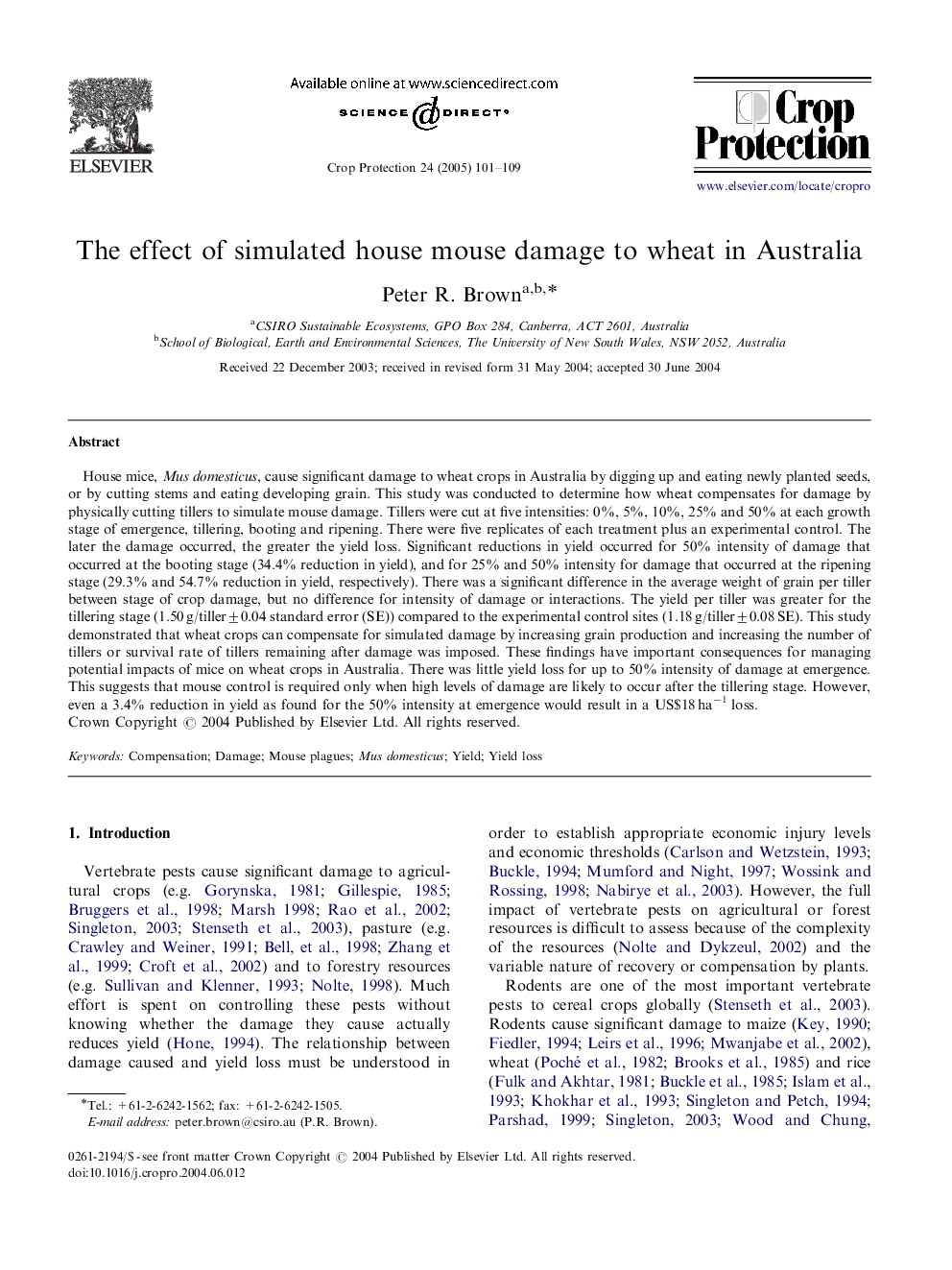| کد مقاله | کد نشریه | سال انتشار | مقاله انگلیسی | نسخه تمام متن |
|---|---|---|---|---|
| 9472854 | 1321395 | 2005 | 9 صفحه PDF | دانلود رایگان |
عنوان انگلیسی مقاله ISI
The effect of simulated house mouse damage to wheat in Australia
دانلود مقاله + سفارش ترجمه
دانلود مقاله ISI انگلیسی
رایگان برای ایرانیان
کلمات کلیدی
موضوعات مرتبط
علوم زیستی و بیوفناوری
علوم کشاورزی و بیولوژیک
علوم زراعت و اصلاح نباتات
پیش نمایش صفحه اول مقاله

چکیده انگلیسی
House mice, Mus domesticus, cause significant damage to wheat crops in Australia by digging up and eating newly planted seeds, or by cutting stems and eating developing grain. This study was conducted to determine how wheat compensates for damage by physically cutting tillers to simulate mouse damage. Tillers were cut at five intensities: 0%, 5%, 10%, 25% and 50% at each growth stage of emergence, tillering, booting and ripening. There were five replicates of each treatment plus an experimental control. The later the damage occurred, the greater the yield loss. Significant reductions in yield occurred for 50% intensity of damage that occurred at the booting stage (34.4% reduction in yield), and for 25% and 50% intensity for damage that occurred at the ripening stage (29.3% and 54.7% reduction in yield, respectively). There was a significant difference in the average weight of grain per tiller between stage of crop damage, but no difference for intensity of damage or interactions. The yield per tiller was greater for the tillering stage (1.50 g/tiller±0.04 standard error (SE)) compared to the experimental control sites (1.18 g/tiller±0.08 SE). This study demonstrated that wheat crops can compensate for simulated damage by increasing grain production and increasing the number of tillers or survival rate of tillers remaining after damage was imposed. These findings have important consequences for managing potential impacts of mice on wheat crops in Australia. There was little yield loss for up to 50% intensity of damage at emergence. This suggests that mouse control is required only when high levels of damage are likely to occur after the tillering stage. However, even a 3.4% reduction in yield as found for the 50% intensity at emergence would result in a US$18 haâ1 loss.
ناشر
Database: Elsevier - ScienceDirect (ساینس دایرکت)
Journal: Crop Protection - Volume 24, Issue 2, February 2005, Pages 101-109
Journal: Crop Protection - Volume 24, Issue 2, February 2005, Pages 101-109
نویسندگان
Peter R. Brown,